Iron Age in West Africa African Rock Art Game Pass
Former United nations Secretary-General (2005)
"Africa'due south rock fine art is the common heritage of all Africans and all people. It is the common heritage of humanity. As populations increment and vandalism and theft of Africa's rock fine art are on the rise, this irreplaceable resource is highly threatened. It is time for Africa's leaders to take a new and more active function. Nosotros must salvage this cultural heritage before it is as well late".
Kofi Annan - Former United nations Secretary-Full general (2005)
Africa has an embarrassment of rock fine art riches. When we hear the words 'African rock art' nosotros think of the exquisite paintings made by the San in southern Africa, and the evocative desert paintings of the Tassili in north Africa. Only, Africa has dozens more stone art traditions, made by many unlike groups and over thousands of years. Allow usa accept a quick journey across the mother continent to explore these traditions and reconnect with the lands of our oldest ancestors and the place where art began.
The 'Fighting Cats' petroglyph
Wadi Mathendous, Libya
© David Coulson
Establish in the Messak Settafet of Libya, the 'Fighting Cats' petroglyph is a striking depiction of two long-tailed figures against each other on their hindquarters as if fighting. They stand on an outcrop looking down over Wadi Mathendous, in a position of power and respect."
In the dry deserts of the Sahara. Here we find some of Africa's oldest exposed rock paintings and engravings. We will see even older, buried, rock art images later, but for now permit u.s. travel back some 12,000 years to the end of the last Ice Age. 12,000 years ago much of the Sahara was a wet and rich grassland supporting great herds of plains animals. In the rock fine art of this time we see antelope, giraffe, elephant, rhino, lion, ostrich too every bit forms of prehistoric cattle that became extinct about 5000 years ago. We even see images of hippo and crocodile, showing that there were pools and rivers in what is now a desert. Decades of enquiry, by many specialists, have given us a rich understanding of the age, sequence and regional variation in Saharan rock fine art. Only, the meaning of its complex symbolism remains elusive. Like all of Africa's hunter-gatherer arts, this was far from a unproblematic record of daily life: nosotros see creatures that are part-man part-animal; giraffe with lines emanating from their mouths that meander across the rock-face until they finally join to a floating human class and many other mysterious beings. Peachy the code of this art is one of the greatest of research challenges today.
The Dabous giraffes of Niger are one such example, with lines carved from both the male and the female giraffe leading down to pocket-sized human-like figures. For these to be included in the spectacular deep, polished engravings is surely significant. The giraffe engravings are located on an isolated outcrop; thought to be between 8,000 and 6,000 years old, the largest one measures almost 5.5 m. from horn to hoof. The outcrop has many other much smaller engravings.
From Uganda to Angola we find a remarkable tradition of geometric fine art
Moving due south on our journeying we enter what is now the tropical zone of Africa, famous for its nighttime impenetrable rainforests. This is the land of the forest hunter-gatherers that we know every bit the Pygmies. Genetic studies prove that the varied Pygmy groups spread across central Africa are of great antiquity: they have lived in the region for at least the last 40,000 years. They are truly get-go peoples. Across the whole of the wood region from Uganda to Angola we discover a remarkable tradition of geometric art. This area was termed "the Schematic Art Zone" by one of the fathers of African archaeology, Desmond Clark. Whilst geometric tradition art is not well known, most iii m sites have been recorded. As well every bit the geometric images there are also a small number of sites with highly stylised and distorted animal figures plus rows of finger dots. The geometric art e'er dominates, just the 2 traditions appear together every bit a pair: they co-occur across a huge expanse and are regularly found shut by. They seem to be kept near, but apart. Pygmy traditions are helping researchers to understand the reasons backside the existence of two Pygmy arts. Another film in this series will focus on this enquiry. This pair of rock art traditions extends far beyond the forests suggesting that Pygmy groups one time occupied a much larger section of central Africa.
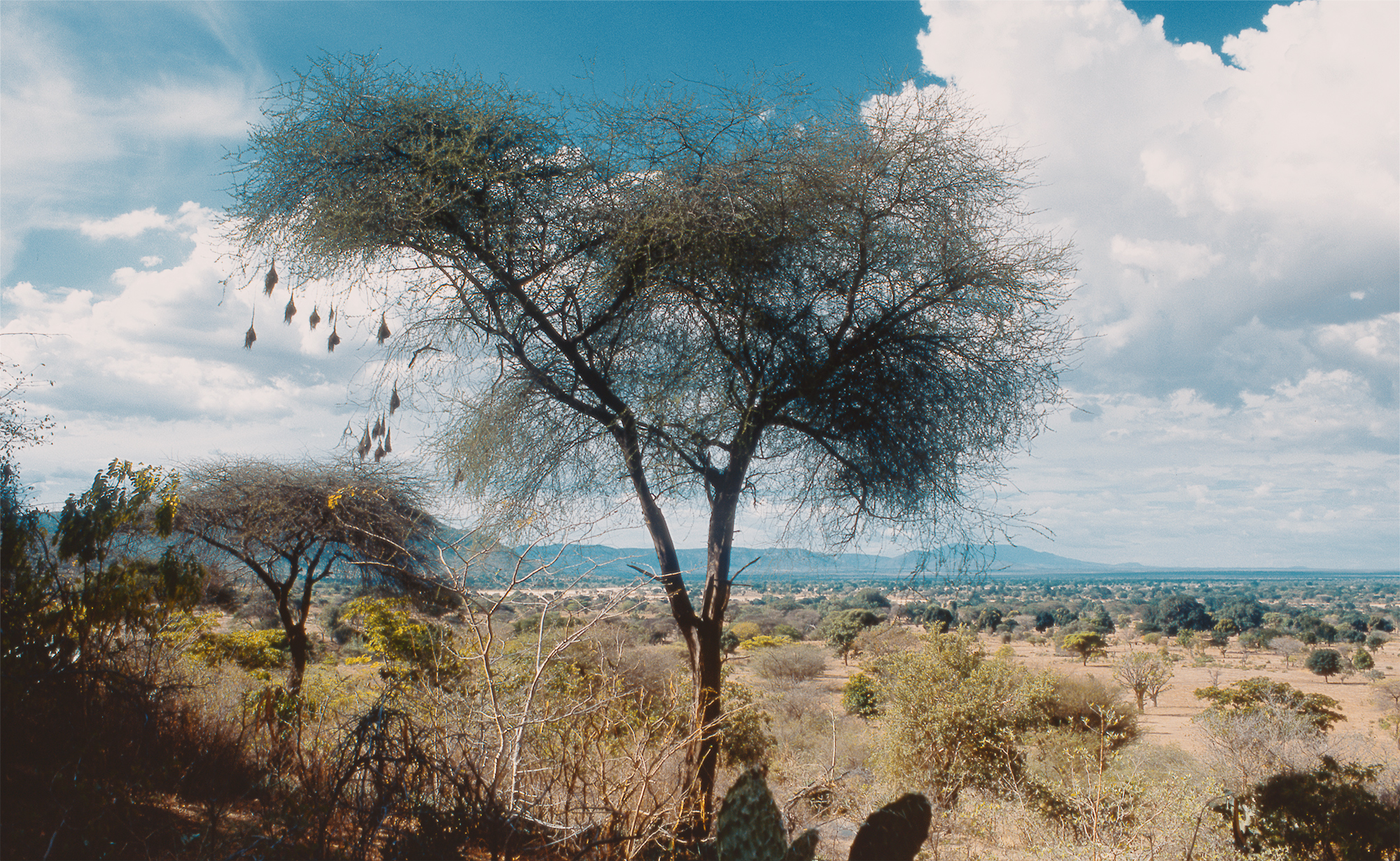
The Kondoa region, Tanzania, Africa
The Kondoa Irangi Rock Paintings are a series of paintings on rockshelter walls in central Tanzania. The Kondoa region was declared a UNESCO World Heritage site in 2006 considering of its impressive drove of stone fine art. These sites were named national monuments in 1937 by the Tanzania Antiquities Department.
In eastern Africa, in central Tanzania, lies 1 of the most intriguing of Africa'south hunter-gatherer rock arts. Whilst other traditions comprehend huge geographic areas and are represented at many thousands of sites, this tradition occurs at only a few hundred sites in an surface area of land less than 100km in diameter. Information technology is an island inside the Pygmy stone fine art zone. The art is made up entirely of brute and human forms. Its closest parallels are with the San art of southern Africa, just a number of its elements, such equally its distinctive man head forms, are unique. The stone art distribution corresponds to spread of people who speak click-languages: the Sandawe and the Hadza. These groups, whilst much integrated with other groups today, take a hunter-gatherer beginnings that extends back long before the coming of pastoralists and farmers into the region. Once again, geneticists confirm that these groups are of exceptional antiquity; along with the San of southern Africa, these are the oldest peoples on earth in terms of their genetic markers. There are a handful of accounts that, tantalisingly, depict Sandawe individuals making stone fine art early in the twentieth century. These accounts provide evidence that the practice of rock art was linked to detail Sandawe rituals, near notably to simbo. Simbo is an ecstatic trip the light fantastic in which the Sandawe communicate with their spirits. Elements in the art provide contained confirmation of this link because they brandish features that can merely be understood by reference to simbo.
The Kondoa region was declared a UNESCO Earth Heritage site in 2006 because of its impressive collection of stone fine art. These sites were named national monuments in 1937 past the Tanzania Antiquities Department.
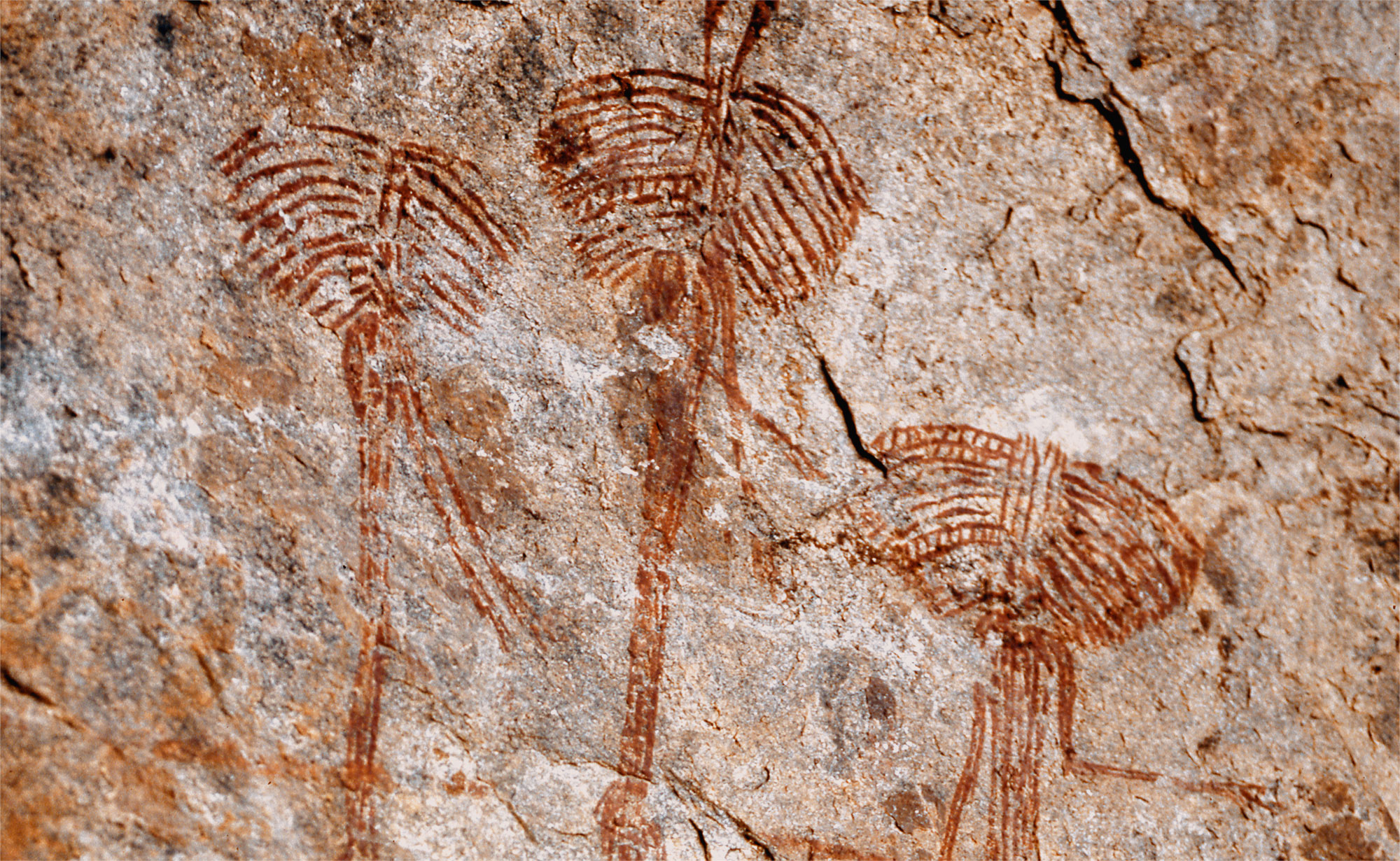
Kondoa Irangi Rock Paintings
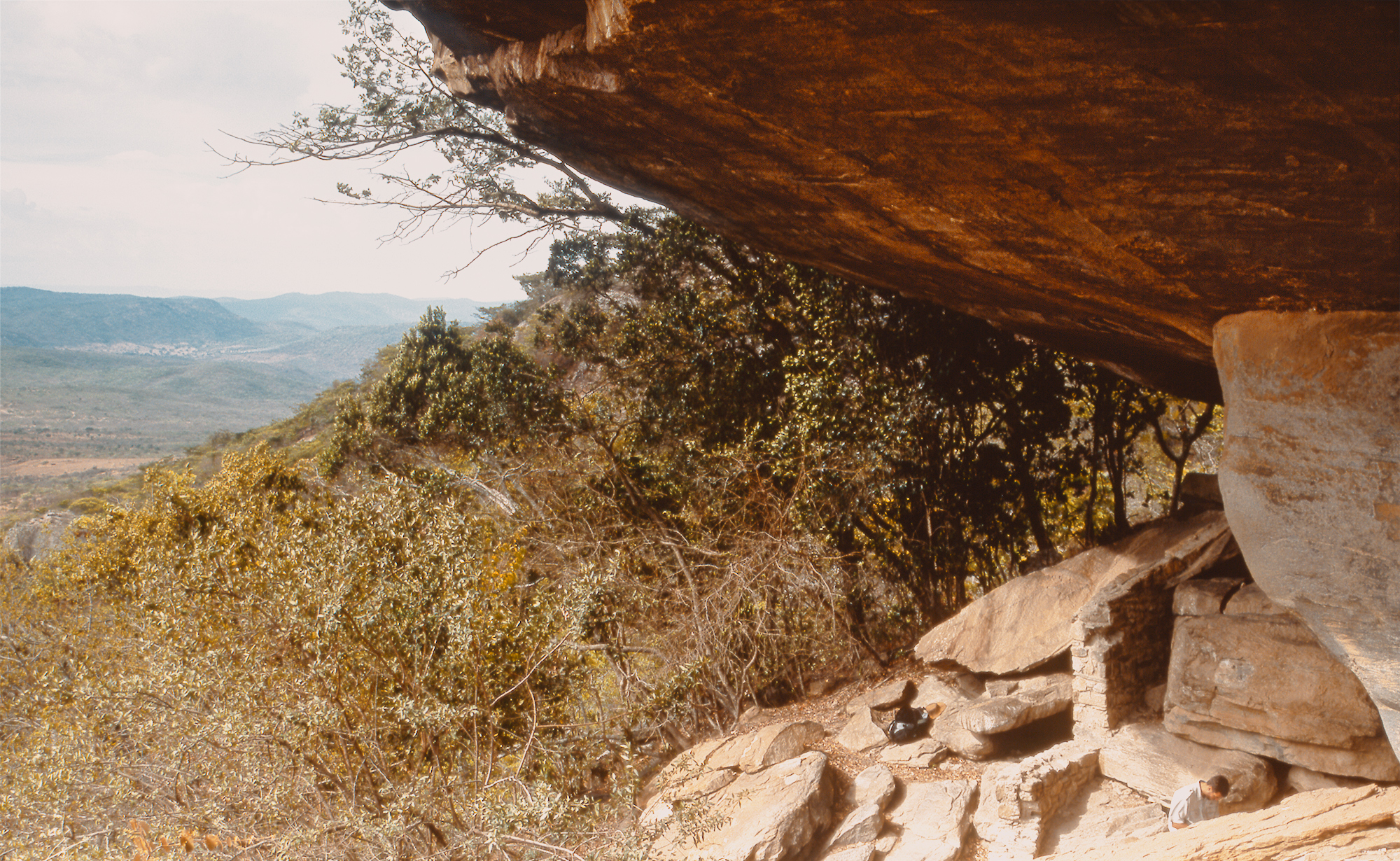
Kondoa Irangi Rock Paintings
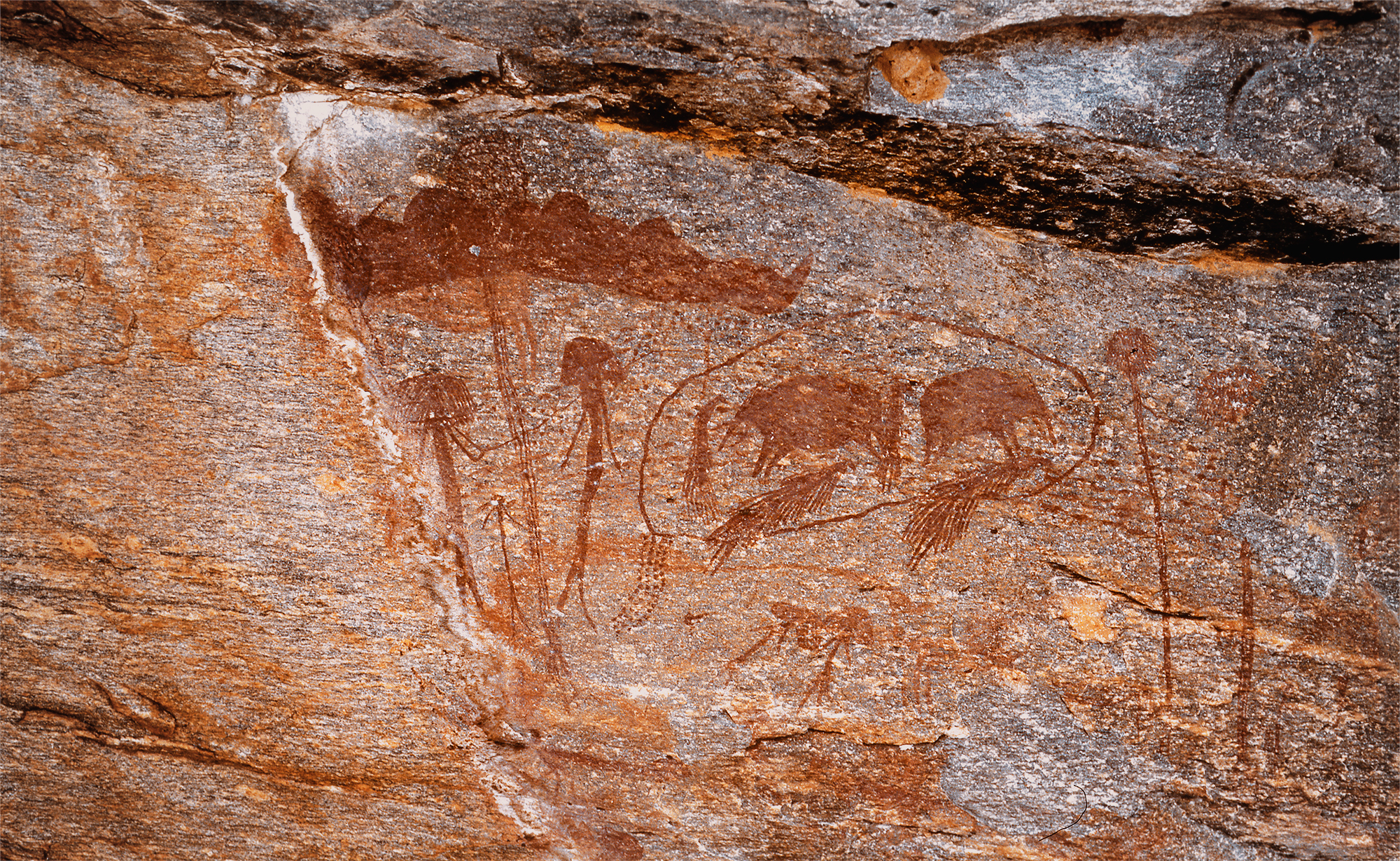
Kondoa Irangi Stone Paintings
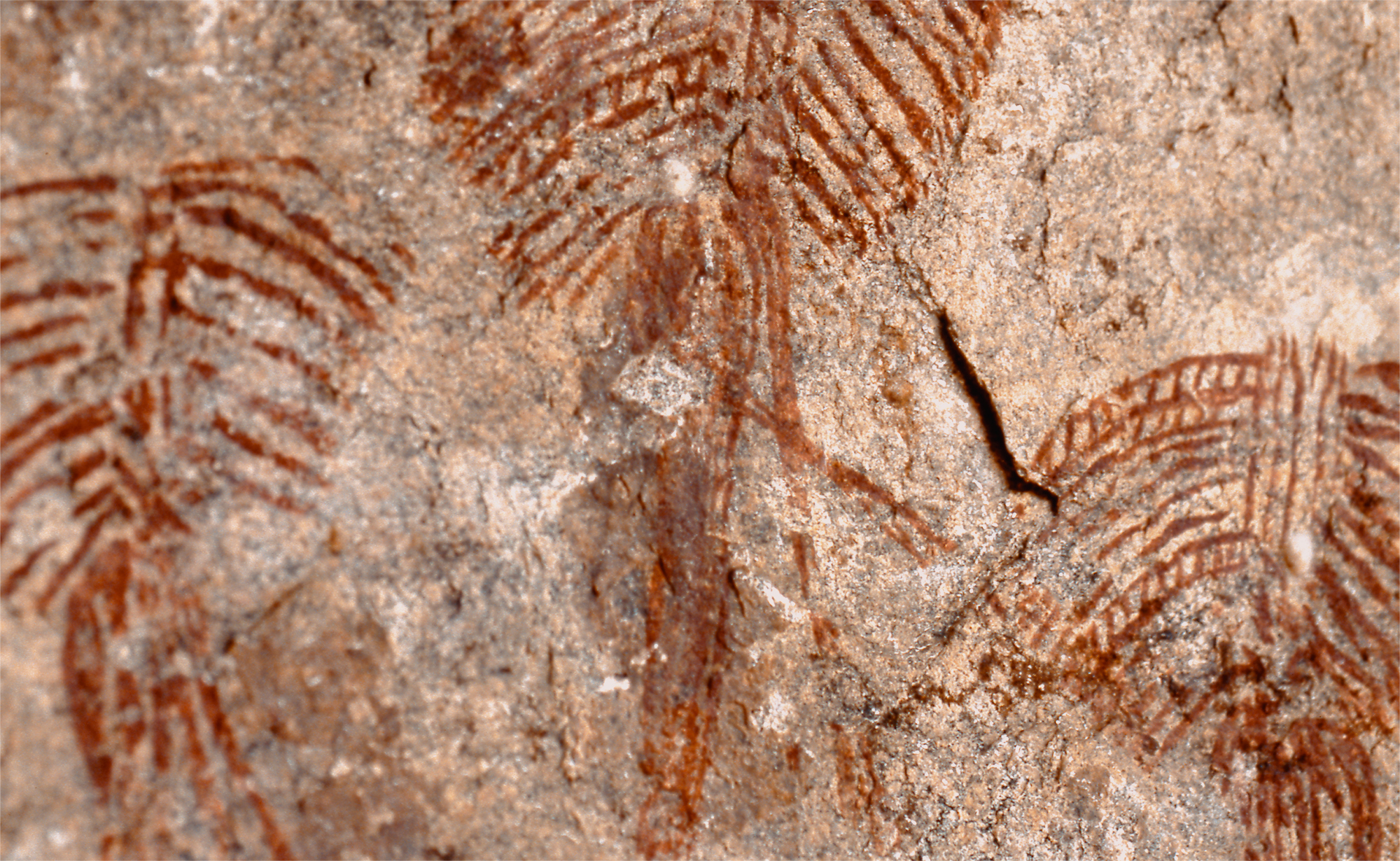
Kondoa Irangi Stone Paintings
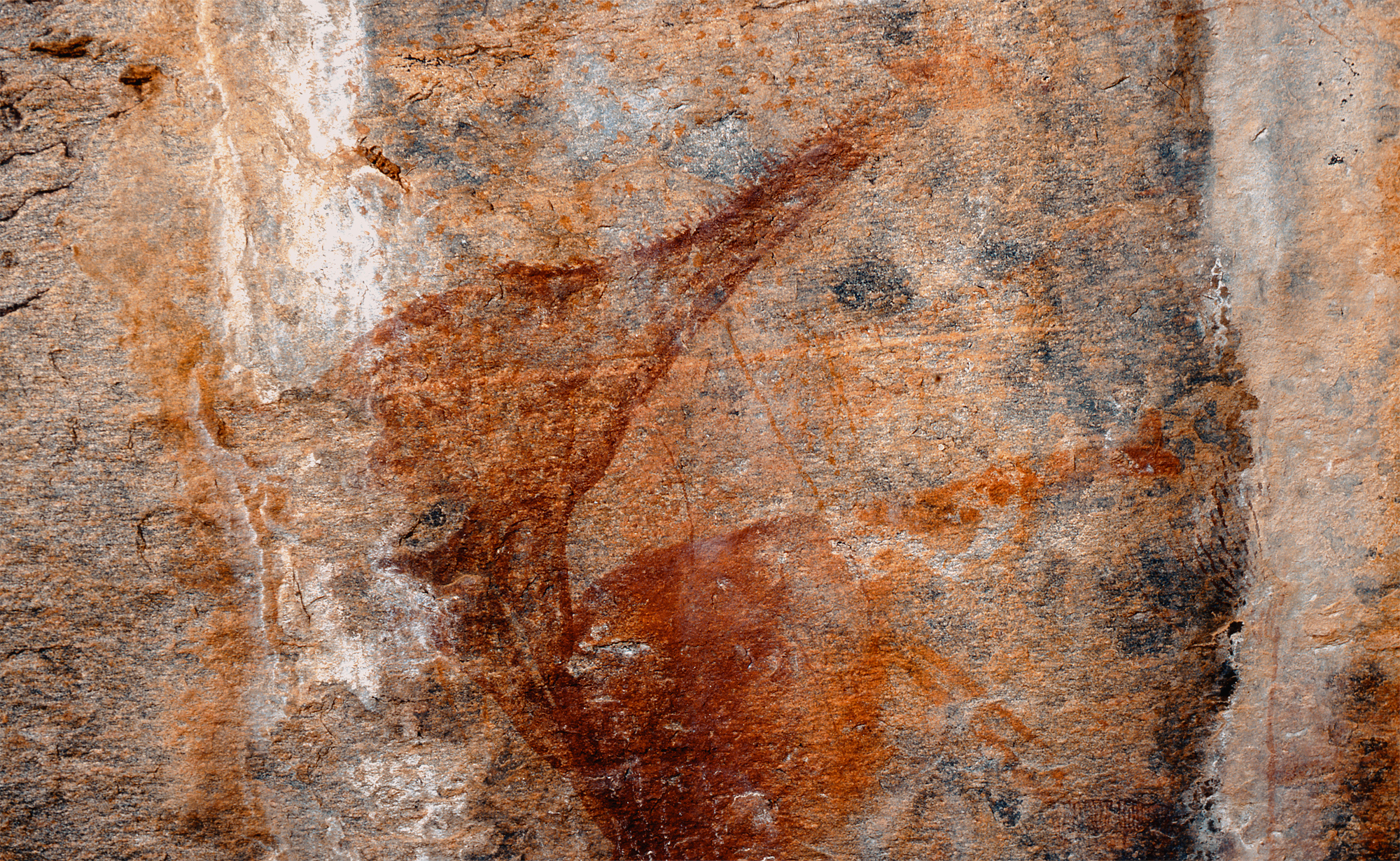
Kondoa Irangi Rock Paintings
Kondoa Irangi Stone Paintings
The Chongoni Rock-Art Area
Situated within a cluster of forested granite hills and roofing an area of 126.iv km2, loftier up the plateau of central Malawi lies the Chongoni Stone-Art Area, the 127 sites of this area feature the richest concentration of rock art in Central Africa. They reflect the comparatively scarce tradition of farmer rock art, as well as paintings by BaTwa hunter-gatherers who inhabited the area from the late Stone Age. The Chewa agriculturalists, whose ancestors lived there from the belatedly Iron Age, practised rock painting until well into the 20th century. The symbols in the rock fine art, which are strongly associated with women, even so accept cultural relevance among the Chewa, and the sites are actively associated with ceremonies and rituals.
In view of this cultural importance, the Chongoni Stone-Fine art Expanse was inscribed equally a UNESCO Earth Heritage site in 2006 under Criteria Iii for the rich cultural traditions of rock fine art and Criteria Half dozen for its continued link to the nowadays society.
Far to the south, beyond the not bad Zambezi River, is the land of the oldest known of all the beginning peoples: the San or Bushmen. This is the place where, it seems, art began. The more contempo San rock paintings and engravings of southern Africa, dating to the past 10,000 years, are amidst the most beautiful and fine of all globe arts in terms of their technique. They are also amidst the most complex and sophisticated in terms of symbolism. Far from a full general view of life, the fine art focuses on a particular function of San feel: the spirit earth journeys and experiences of San religious specialists, people we know today as shamans. Thus nosotros run into many features from the all important trance trip the light fantastic, the venue in which the shamans gained access to the spirit world. We see dancers with antelope hooves, showing that they have taken on antelope power, just equally San shamans depict in the Kalahari today. Then, we see shamans climbing upwardly the 'threads of light' that connect to the sky-world. We come across trance flying. Merely, the fine art was far from only a record of spirit journeys. Powerful substances such as eland blood were put into the paints so to make each image a reservoir of potency. As each generation of artists painted or engraved layer upon layer of art on the rock surfaces they were creating potent spiritual places. San rock art continued to exist made into historical times. One of the final rock painters, Lindiso Dyantyi, was yet painting equally late equally the 1930s.
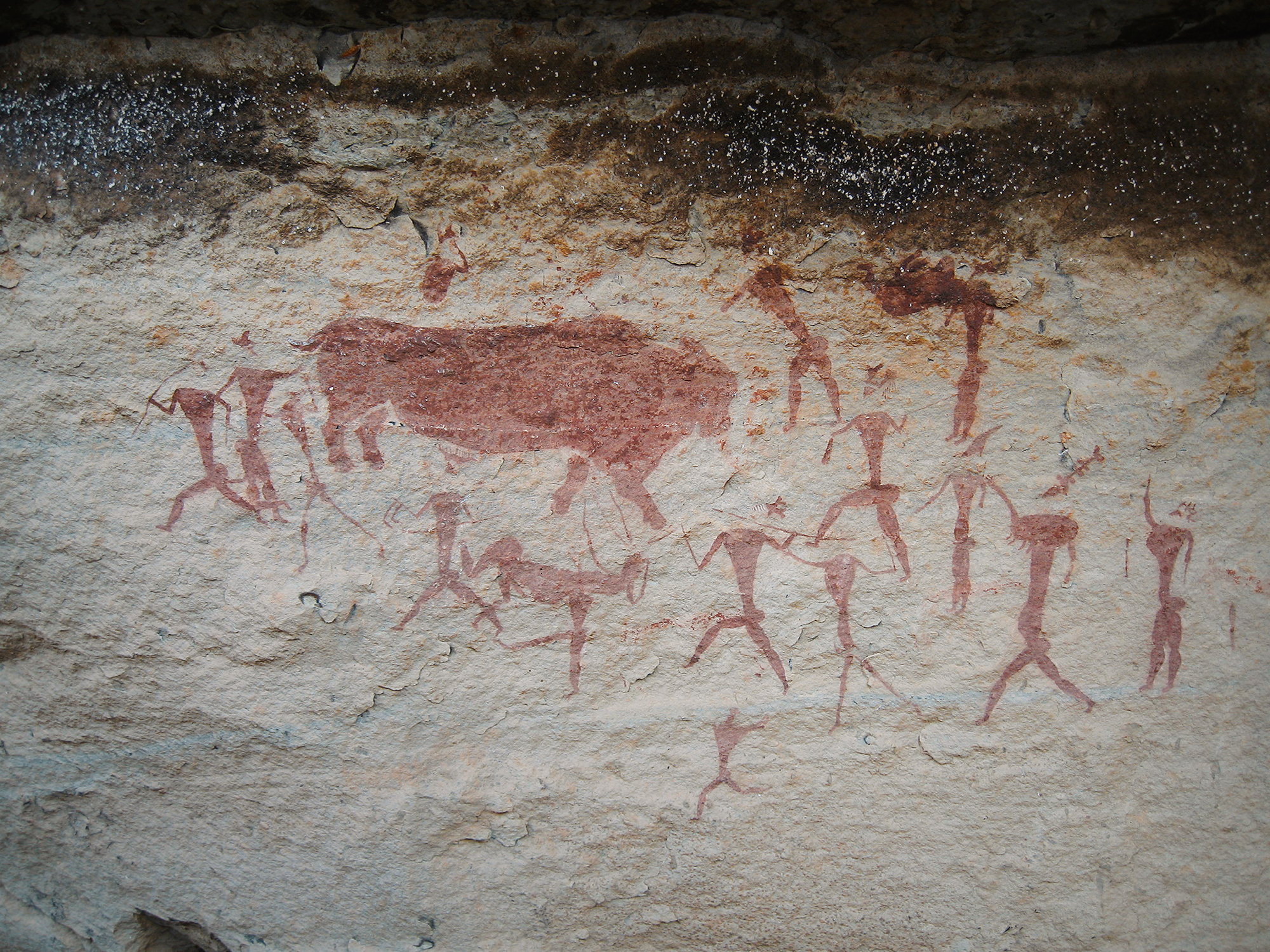
From KwaZulu-Natal, a group of trancers in the process of capturing the "pelting-bull"
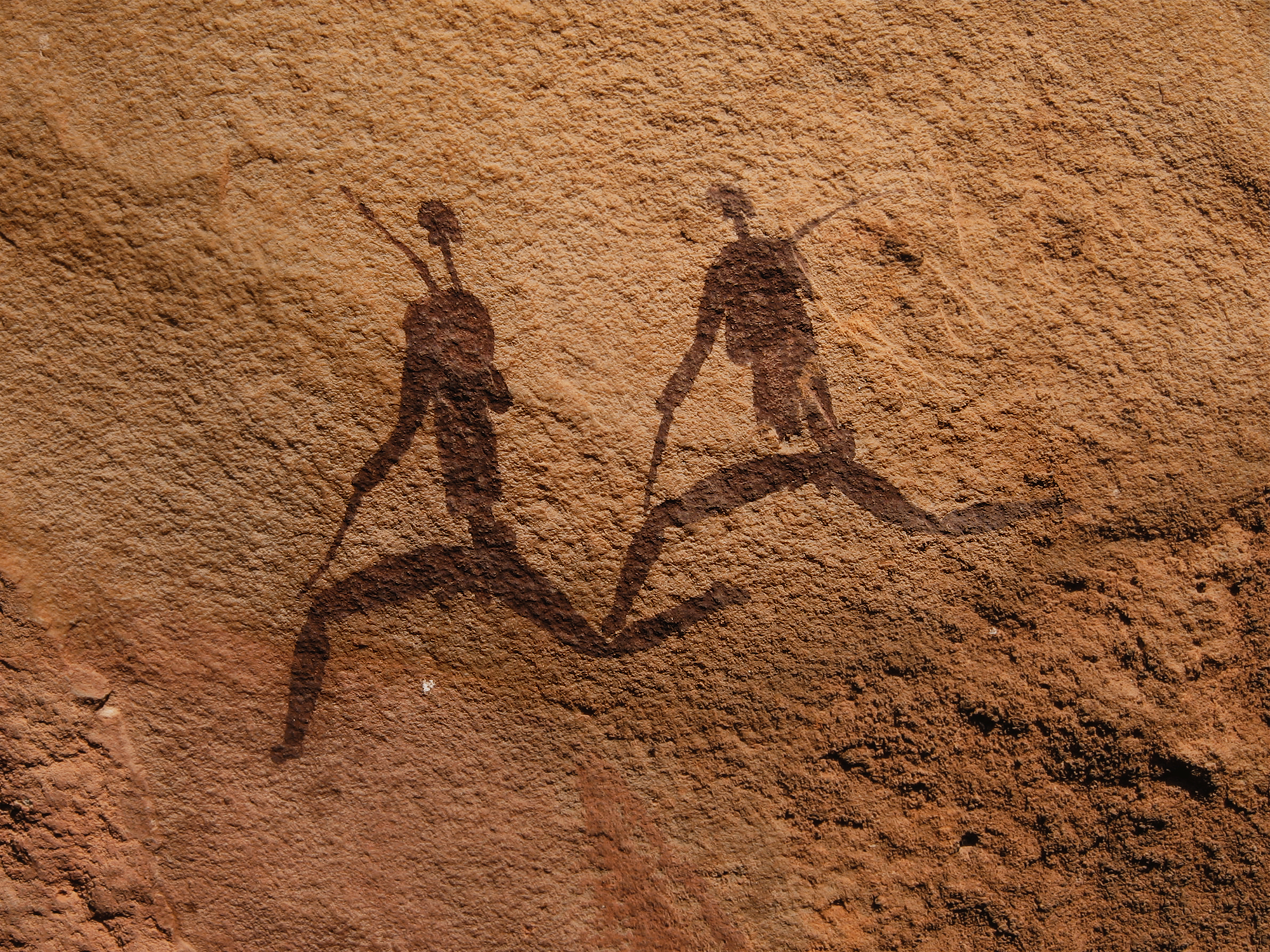
San Bushmen depict their experiences of out-of-trunk travel as beingness like flying
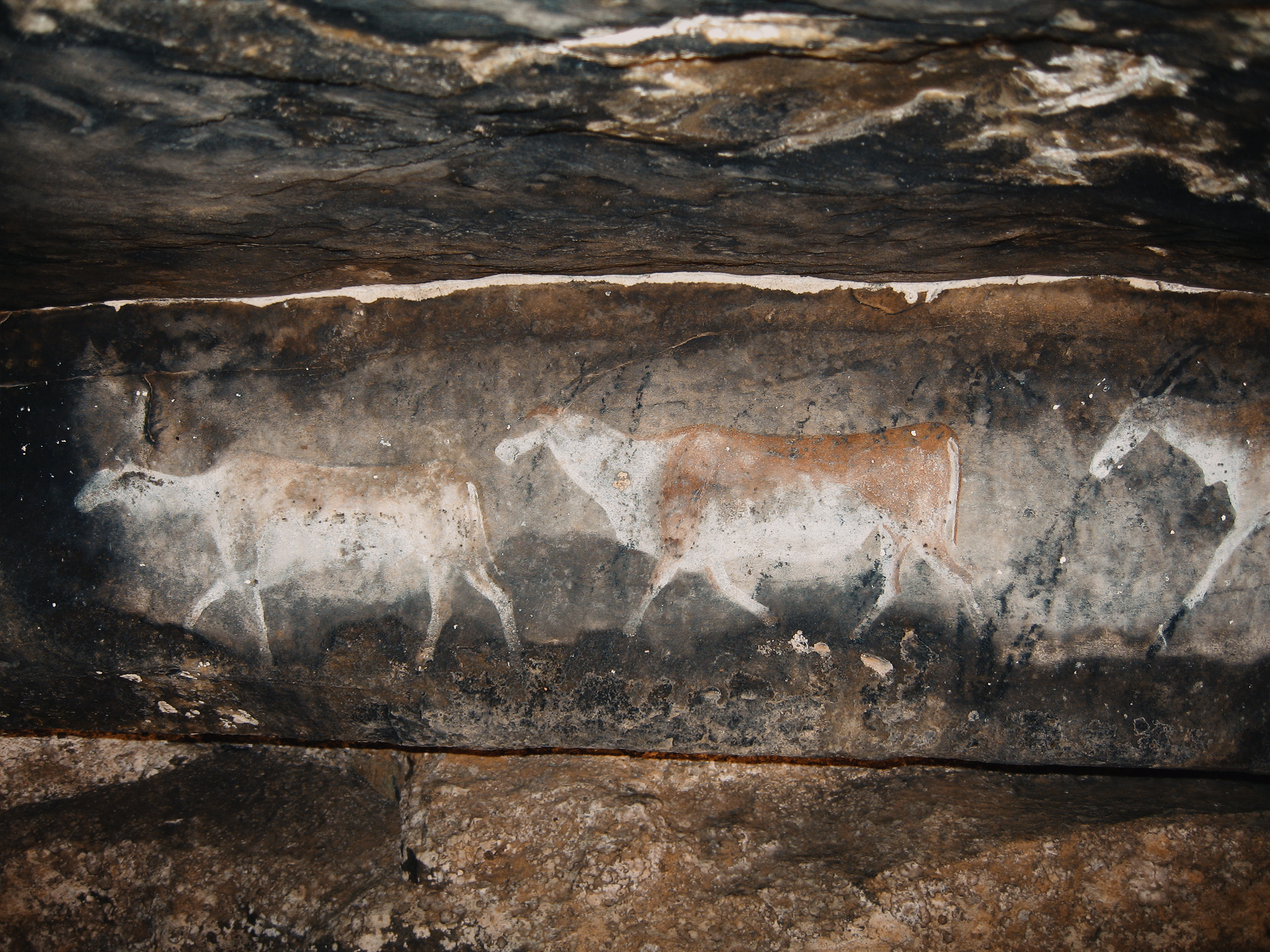
Artists painted eland in a great diverseness of postures, from diverse perspectives
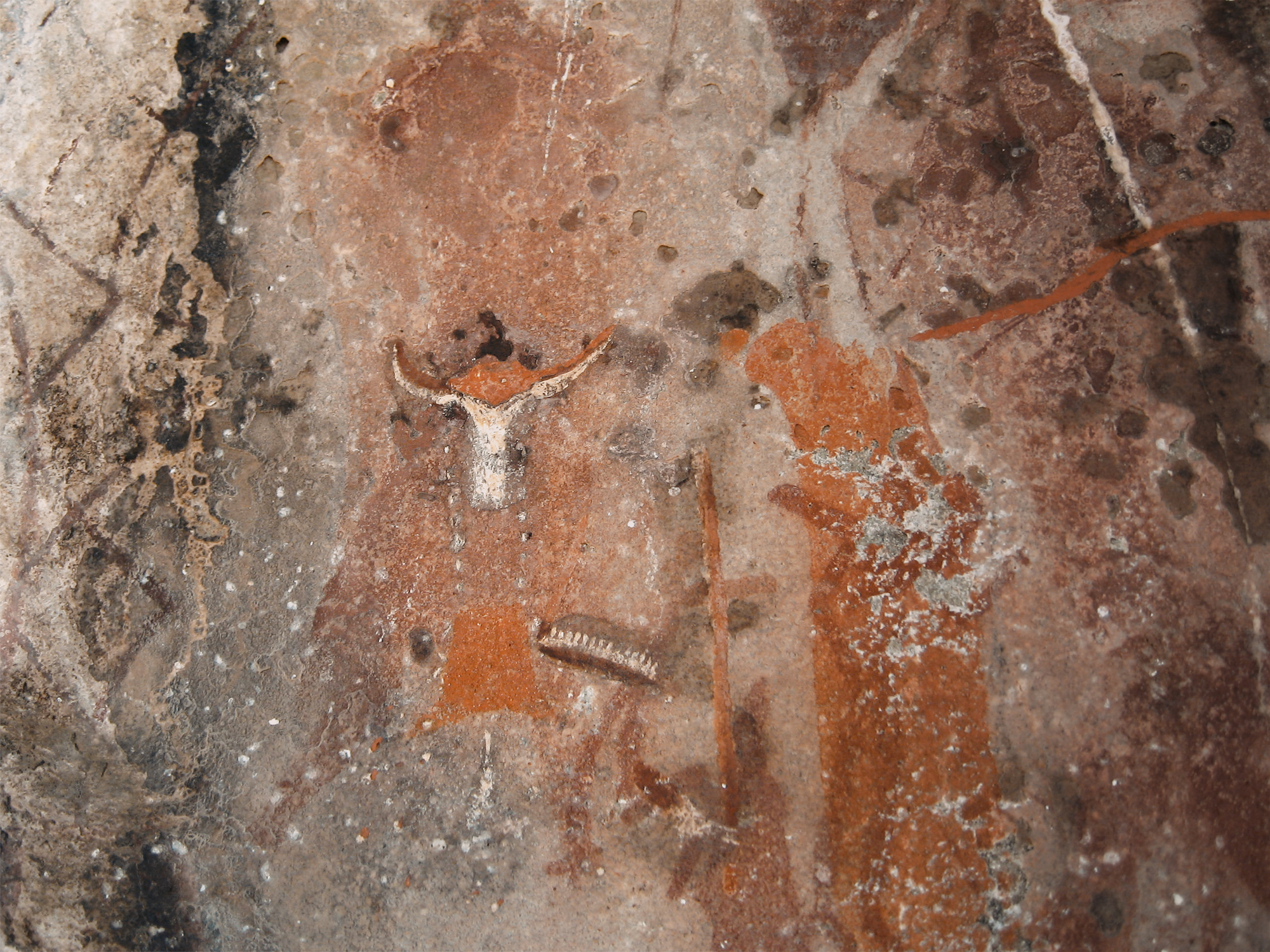
The spirit earth journeys and experiences of San religious specialists or shamans
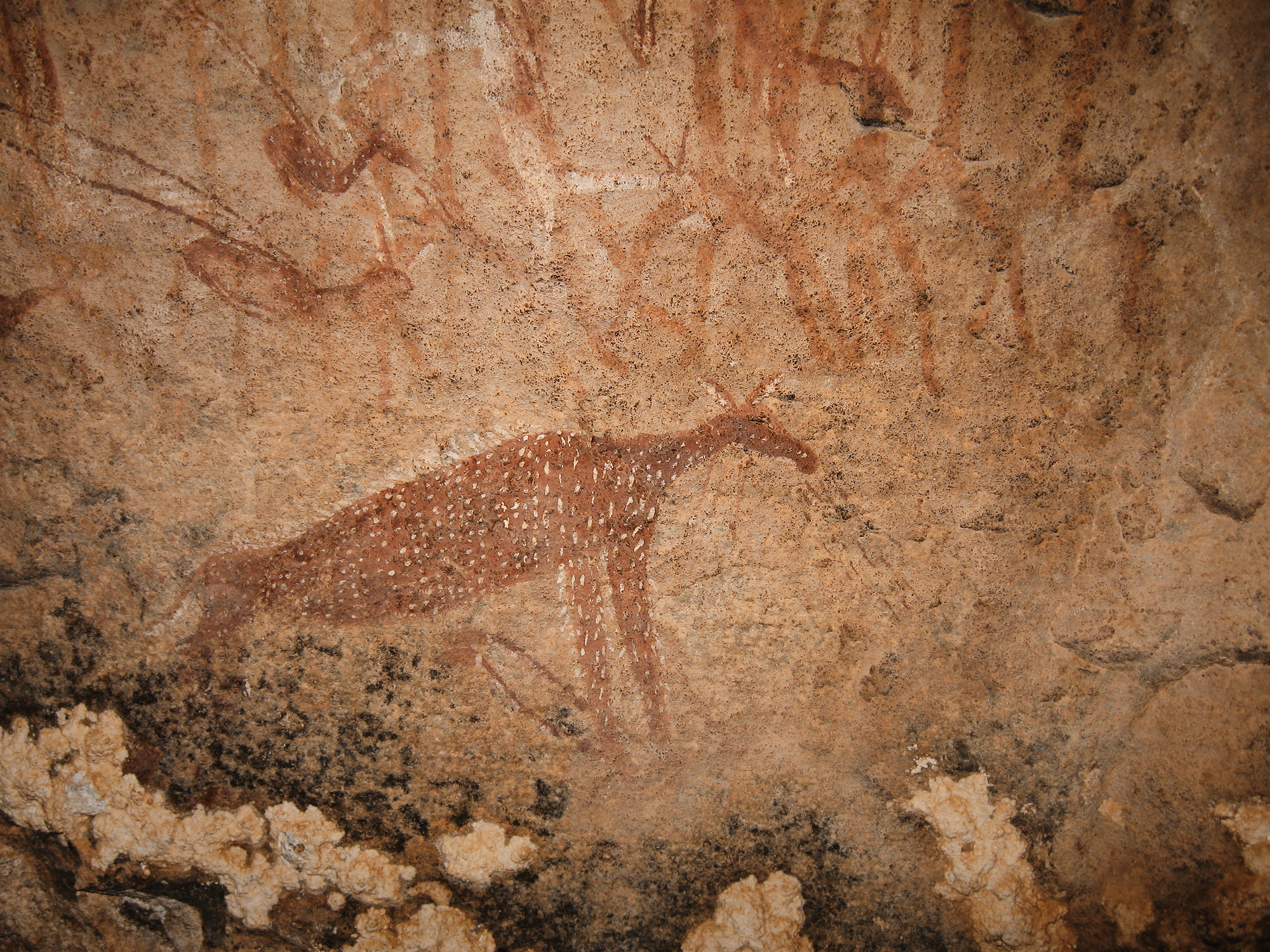
Rock Art images depict animals in relation to aspects of the San trance dance
Game Laissez passer - The famous shelter in the Drakensberg Mountains of Southern Africa
The expanse exhibits a profusion of distinctive rock landforms rising higher up the granite shield that covers much of Republic of zimbabwe. The large boulders provide abundant natural shelters and take been associated with human occupation from the early Stone Age correct through to early on historical times, and intermittently since. They too feature an outstanding collection of rock paintings. The Matobo Hills continue to provide a strong focus for the local customs, which nonetheless uses shrines and sacred places closely linked to traditional, social and economic activities.
In that location were other rock art traditions existence made in southern Africa at the fourth dimension of the last San rock artists. Pastoralist groups, known as Khoekhoen, were finger-painting and engraving a tradition of geometric art; farmer groups such every bit the Northern Sotho were making white paintings as part of their boys and girls initiation ceremonies. These traditions have a particular history; they were brought to southern Africa when these groups moved into the region some 2000 years ago. Rock art traditions belonging to farmers and pastoralists are also found in a thin scatter across other parts of Africa. Typically each tradition is found at a few hundred sites rather than the many thousands of sites typical of hunter-gatherer traditions. The after arts tend to use white as their chief colour and pigment is ofttimes applied by paw rather than using a brush. Many pastoralist and farmer groups did not make stone art. They chose instead to make their ritual art in some other medium, such every bit wooden and clay figurines or hut paintings. Farmer and pastoralist stone arts are therefore comparatively rare, fifty-fifty though they are some of the most recent.
Mapungubwe Cultural Landscape
Mapungubwe is set hard against the northern border of South Africa, joining Zimbabwe and Botswana. Information technology is an open up, expansive savannah landscape at the confluence of the Limpopo and Shashe rivers. Mapungubwe developed into the largest kingdom in the sub-continent before it was abandoned in the 14th century. What survives are the almost untouched remains of the palace sites and also the entire settlement expanse dependent upon them, as well equally 2 earlier uppercase sites, the whole presenting an unrivalled flick of the development of social and political structures over some 400 years.
To find out how this richness of ancient arts began we need to travel dorsum far in time, most 80,000 years, to the dawn of modern humans. This was a fourth dimension earlier our directly ancestors had reached across Africa and the Eye Eastward. In the last decade we have constitute an unexpected richness in the early human archaeological sites of southern Africa. We have evidence that people were making harpoons. This means that they were planning their food collecting strategies in much more sophisticated ways than had ever been done by other animals or other hominids. They were also making awls and therefore were probably wearing skins for clothing. In terms of their mental capacity, they were just like united states of america.
The key question is whether they idea like us, and the evidence seems to exist that they did. What sets united states of america apart from other animals is our ability to think ahead and to imagine things we cannot meet. Nosotros can recollect our dreams and we tin can imagine that they may come truthful. We can besides imagine that we see visions of other things and other places, such as ghosts and a spirit world. Nosotros can retrieve symbolically. We have that an object tin can denote something that it is not. A shiny piece of stone can denote loftier status when it is worn, or a few lines on a rock can denote an animal. This ability is uniquely human and it has given us, and only usa, the capacity to develop religion and to make art. We have the oldest proof of this kind of symbolic thinking 80,000 years agone in southern Africa. People in South Africa's southern Cape were wearing beads and making complex patterned designs (or art) on pieces of ochre and egg shell. Other people in Republic of botswana were carving into a strangely shaped stone that protrudes out of a cavern and were bringing stone tools from hundreds of kilometres abroad and then breaking them in front of this rock. What exactly these early beliefs involved is difficult to know, but a class of organized religion had begun and with it had come fine art. From this time we see art and religion proceed and develop, and so spread out to other parts of the world. It is thus with expert reason that we telephone call Africa the identify of Origins and recognise it as having the longest tradition of art on world.
David Coulson
TARA - Trust for African Rock Art

David Coulson is the Chairman and founder of TARA, Trust for African Rock Art, a Nairobi-based international organization committed to the awareness and preservation of Africa'south Rock Art Heritage. The Trust's Founding Patron was the Palaeontologist Dr. Mary Leakey. One of the leading photographers of paintings and petroglyphs. He has travelled extensively throughout the varied landscapes of the African continent capturing both the beauty and variety.
Since it was ready in the mid 1990's TARA has worked in over 20 different African countries including 8 Sahara countries and the importance of its piece of work has been endorsed by Nelson Mandela and Kofi Annan. TARA partners internationally with UNESCO'due south Globe Heritage Middle and with the British Museum and with relevant state partners and institutions in Africa.
His book 'African Rock Art: Paintings & Engravings on Rock', co-authored by the late Alec Campbell, was published by Harry Due north. Abrams Inc., New York in 2001. The piece of work of TARA in publicising the need for preservation is 2nd to none. David is a member of the Bradshaw Foundation Advisory Lath and a member of the Rock Art Network.
Ben Smith
The Academy of Western Australia
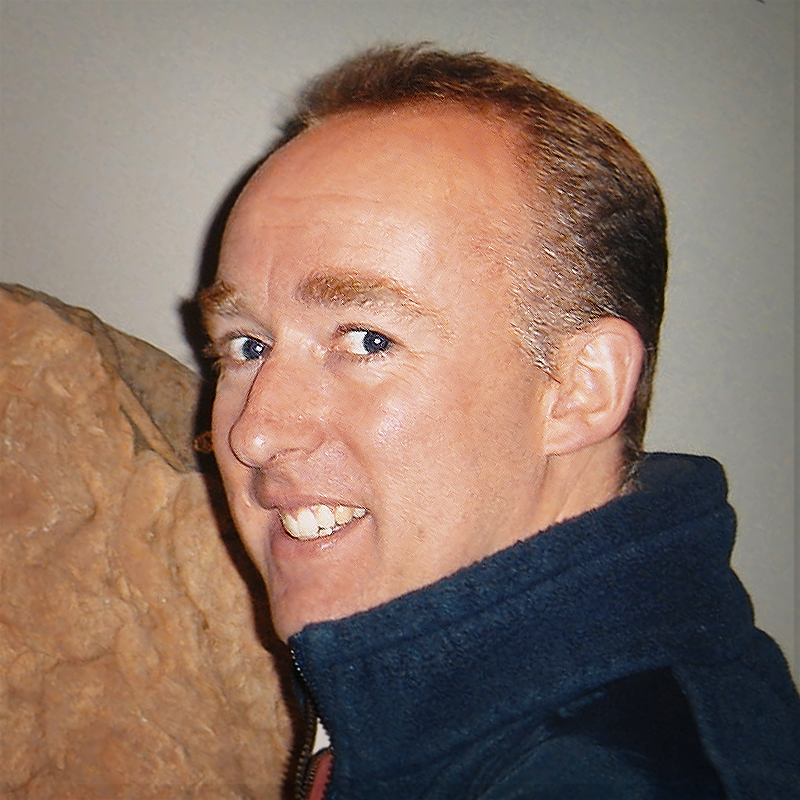
University of Western Australia
Benjamin W. Smith gained his doctoral degree at Cambridge Academy, UK, in 1995. The topic of his doctoral inquiry was the rock fine art of key Africa. From 1997 until 2012 he worked for the University of the Witwatersrand in South Africa, directing the Rock Art Research Institute from 2000 until 2012. He is now the Professor of World Rock Art in UWA Archaeology; Associate Dean of Enquiry in the Kinesthesia of Arts, Business, Law and Pedagogy; President of the ICOMOS International Scientific Committee for Rock Art..
malonefatichaddent.blogspot.com
Source: https://www.bradshawfoundation.com/africa/african_rock_art/index.php
0 Response to "Iron Age in West Africa African Rock Art Game Pass"
ارسال یک نظر